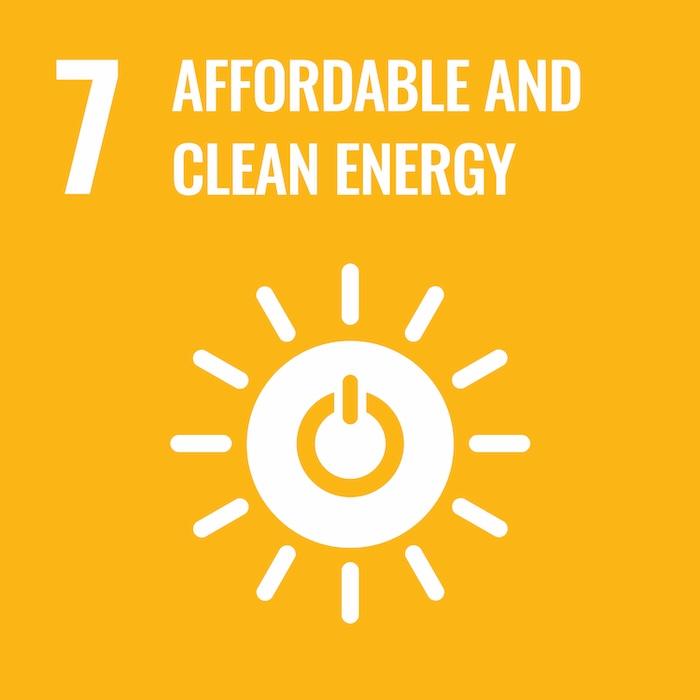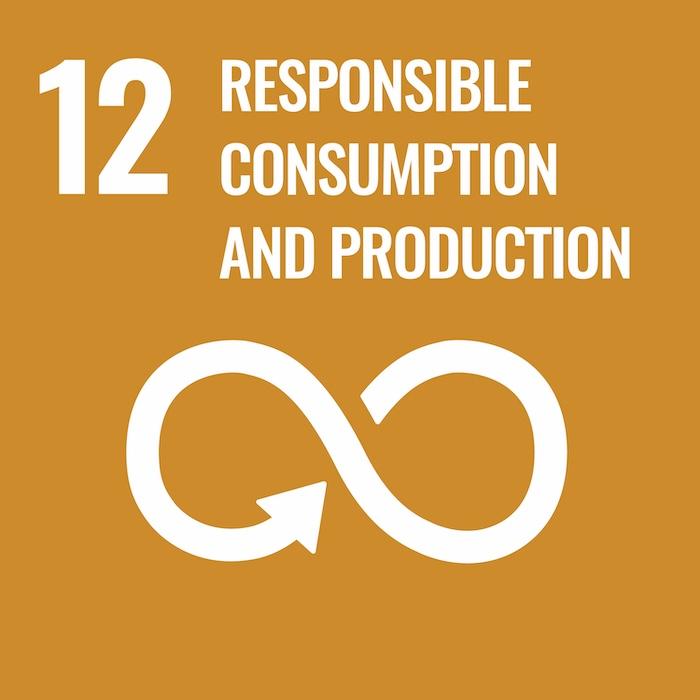Wesco 2024 Sustainability Report: Ensuring Continuous Improvement
Read the 2024 Wesco Sustainability Report here
Ensuring Continuous Improvement
Wesco is dedicated to improving our environmental management through setting, achieving, and striving toward new goals. Strong environmental management is an advantage for our business as we implement new practices to reduce our impacts, benefiting our customers and the communities in which we operate. More information on our sustainable client offerings is included in the Sustainable Products and Supply Chain section of this report.
Our Global Environmental, Health, Safety and Sustainability Policy sets the foundation for our efforts. Elements of the policy are aligned with key provisions of the ISO 14001:2015 environmental management standards.
The policy outlines accountability, direct program responsibilities, key performance indicators and other metrics to track progress and is conducted by the sustainability and environmental compliance team, who report progress to senior management monthly. We implement the Plan-Do-Check-Act cycle to ensure continuous improvement in our energy and environmental management efforts.
Environmental Goals
Target: Reduce absolute Scope 1 and 2 green house gas emissions 30% for our U.S., Canada, and U.K. operations from a 2021 baseline by 2030.
- Progress: Wesco has reduced scope 1 and 2 emissions by 1% or 896 total MTCO2e from our 2021 baseline for our U.S., Canada and U.K operations.
Target: Reduce landfilled waste intensity by 15% across our U.S. and Canadian locations from a 2020 baseline by 2030.
- Progress: Wesco has reduced total waste generated by 3%, waste to landfill by 11%, and increased waste recycled by 15%.
UN Sustainable Development Goals:
SDG 7: Affordable and Clean Energy
- Completed 2800+ energy management projects with customers covering 74M sq. ft. with the potential to avoid 53,612 MTCO2e.
SDG 12: Responsible Production and Consumption
- Improved truck fleet efficiency by 11.2% from 2022 to 2023 by increased use of routing software, awareness training and policy.
Greenhouse Gas (GHG) Emissions
This report marks a significant expansion in the reporting coverage of our scopes 1 and 2 green house gas emissions inventory globally. We expanded our 2023 green house gas accounting efforts to include scope 1 and 2 emissions from global facilities adding primary data for 120 additional facilities and 36 new countries, bringing the total to 733 facilities across 39 countries to cover 94% of Wesco’s global locations. Our previous data focused on our U.S., Canada, and U.K. operations, which encompasses 79% of the Wesco footprint and is the boundary for our current 30% emissions reduction target. Moving forward, we will continue to track emissions reductions against national and regional baselines.
U.S., Canada and U.K. data:
Electricity:
- 2021: 31,051
- 2022: 29,158
- 2023*: 36,719
Building Fuels:
- 2021: 28,846
- 2022: 24,892
- 2023*: 22,101
Leased Fleet**
- 2021: 24,356
- 2022: 26,520
- 2023*: 28,593
*Please note that the 2023 data now reflects our global totals. 2022 data reflects just the U.S., Canada and U.K. businesses.
**Leased fleet data includes combined emission for all car and truck fleet. The 2023 Leased fleet data reflects our updated goal and 2021 baseline as described on page 20.
Scopes and Categories
Since we expanded our scope 1 and 2 data to add emissions from 733 facilities across 39 countries, our total reported global scope 1 and 2 emissions increased by 4% in 2023 from our 2021 baseline for our U.S., Canada, and U.K. facilities. However, the green house gas emissions associated with the baseline countries in fact decreased by 1% from 2022 to 2023, despite a 7% increase in total facility square footage to support business growth.
Our scope 1 and 2 emissions are generated by three primary sources: electricity use, building fuels and our transportation fleet – both owned and leased. Among these, the largest source of these green house gas emissions is the electricity and natural gas used by our facilities, which accounts for approximately 67% of our combined scope 1 and 2 emissions. As such, building energy efficiency initiatives and process improvements are a key focus of our emissions-reduction activities.
In addition to expanding our inventory to account for global emissions, we continue to make strides towards enhancing data accuracy with increasing the use of primary data. Where primary data is not available, estimates are made using data from the Commercial Buildings Energy Consumption Survey (CBECS) for global sites to have a more complete view of our emissions. We’ve improved data accuracy for our fleet emissions calculations by replacing distance data with fuel data.
To improve our scope 2 emissions calculation, we continued our transition to market-based data collection. Our scope 2 emissions now include 58 custom emissions factors which span coverage for over 300 North American Wesco locations. Transitioning to a market-based approach allows Wesco to capture utility provider-specific emissions factors which account for their individual energy mix. As data quality improves globally, we intend to expand the use of custom emissions factors to continually improve the accuracy of our scope 2 calculations.
Energy
Identifying new energy-efficient practices is at the core of our business strategy. Most of the energy we use comes from electricity and natural gas for lighting, heating and cooling our nearly 800 branches, warehouses and sales offices in more than 50 countries around the world. Our fleet of approximately 1,300 trucks and 1,700 cars used in our distribution and sales activities consume fuel that further contributes to our total energy consumption.
Facilities
Approximately 92% of our facility portfolio is leased, which reduces our control over facility energy consumption and adds complexity to meeting our emissions reduction goal. Where possible, we engage with the owners and agents of the buildings we lease to improve energy efficiency. Our greatest opportunity to make an impact is during lease negotiations. We now include energy-efficiency requirements in new building leases. For the buildings we own, we implement various initiatives to improve our energy efficiency.
In Our Facilities:
- In 2021, we launched a lighting retrofit project, replacing lighting equipment in 21 facilities with more efficient technology (completed in 2022). We were able to track electricity use at 19 of these facilities in 2023. Based on these changes, we achieved a significant reduction of over 20% in both electricity use and associated green house gas emissions compared to the baseline before the project.
- Energy audits began in 2023 at several sites with plans to expand to additional sites in 2024.
Overall Energy Use:
U.S., Canada and U.K. data
- 2021: 1,197,207 (-)
- 2022: 1,126,053 (-5.9%)
- 2023*: 1,181,904 (5.0%)
Intensity
- 2021: 57,464 (-)
- 2022: 50,624 (-11.9%)
- 2023*: 44,859 (-11.4%)
Facility Energy Use
- 2021: 849,900 (-)
- 2022: 738,231 (-13.1%)
- 2023*: 778,842 (5.5%)
Intensity
- 2021: 40,974 (-)
- 2022: 33,189 (-19.0%)
- 2023*: 29,561 (-10.9%)
*Please note that the 2023 data now reflects our global totals. 2022 data reflects just the U.S., Canada and U.K. businesses.
Transportation Fleet
A secondary source of green house gas emissions is from our truck and car fleet. Our Fleet Efficiency Policy includes the use of fuel-efficient vehicles, determining efficient routes and idling restrictions. The policy also provides our teams guidance on driving practices that can reduce fuel use within their truck and car fleets. When purchasing new vehicles, we require an evaluation of the most fuel- efficient models available. Locations are urged to retire the least-efficient vehicles first and take steps to improve the efficiency of the remaining vehicles. Future actions are planned to investigate opportunities to upgrade existing fleet vehicles with available technologies to improve fuel efficiencies.
As of 2023, 198 of our distribution centers and branches were using industry-leading route planning software to meet customer delivery dates and eliminate wasteful mileage. For employees who drive either a company truck or car, we provide training on ways to increase vehicle fuel efficiency. This includes accelerating gradually, maintaining proper tire pressure, conducting timely preventative maintenance and using more efficient routes.
Our idling policy requires an engine to be turned off unless necessary for work. Exceptions include engine warmup and during periods of extreme cold weather. Anti-idling technology is part of base vehicle specifications for our full fleet. We anticipate continued green house gas reductions since this increased visibility will allow us to implement targeted training at locations where idling performance is poorest.
To reduce energy use and emissions in our car fleet, we are continuing a three-year transition plan to move from employee-owned to company-leased vehicles. Employees in the U.S. and Canada who log more than 7,500 miles in business travel annually can optionally use a leased vehicle rather than their personal cars. Leased vehicles give us more control over our fuel use. We continue to explore more efficient vehicles, including electric and alternative fuel cars, for this program.
In 2023, we continued pilot testing of electric vehicles. We introduced six trucks into our fleet vehicles across three locations and analyzed their utilization. In 2024, we will continue monitoring this program and evaluate future expansion.
To learn more, download the 2024 Wesco Sustainability Report here.
About This Report
Unless otherwise stated, this report covers activities, data and initiatives from our fiscal year 2023.
ESG Disclosure and Framework Alignment
The topics covered in this report include those that we have determined to be material for our business and stakeholders as noted on page 12. Wesco aligns with several ESG frameworks and disclosures in support of our commitment to transparency and our fulfillment of stakeholder needs and expectations. We leverage the following frameworks and standards to provide robust ESG information disclosure:
- Global Reporting Initiative (GRI): GRI offers a list of global standards and guidelines around sustainability reporting.
- Sustainability Accounting Standards Board (SASB): SASB provides a comprehensive set of industry-specific disclosure topics and guidelines.
- Task Force on Climate-Related Financial Disclosures (TCFD): TCFD provides disclosure recommendations on thematic ESG topics such as governance, strategy, risk management, metrics and targets to provide stakeholders with fuller information surrounding climate risks.
- CDP: Formerly the Carbon Disclosure Project, CDP is an international organization that helps companies and cities measure and disclose important environmental impact information through an annual questionnaire and rating system.
- United Nations Global Compact (UNGC): UNGC is an initiative that aims to help businesses align their strategies and work toward the U.N.’s Sustainable Development Goals.
- United Nations Sustainable Development Goals (U.N. SDGs): U.N. SDGs provide a shared set of 17 toward peace and prosperity for people and planet goals and create a call to action by all countries in a global partnership.
We also regularly engage with our investors, employees, customers, regulators, ratings agencies and others on ESG and business issues. Additional information about Wesco can be found in our public financial filings—including our annual report and proxy filings—as well as on the Security and Exchange Commission’s website at www.sec.gov or on the Investors page of our website at Wesco.com.
Wesco plans to continue to report annually as we monitor, measure, and deepen our ESG initiatives and disclosures.
Wesco endorses the United Nations Sustainable Development Goals (SDGs), which are a call to action to end poverty, protect the planet, and ensure that all people enjoy peace and prosperity.
More information about our SDG aligned initiatives is included throughout this report.
Assurance
We did not seek third-party assurance for this report; however, we will consider doing so for future reporting. The information and data contained in this report was vetted by internal subject matter experts on the various ESG topics included in this report.
Contact Us
We appreciate and welcome feedback on our ESG initiatives and reporting and invite you to contact us directly via email at Sustainability@Wesco.com.




